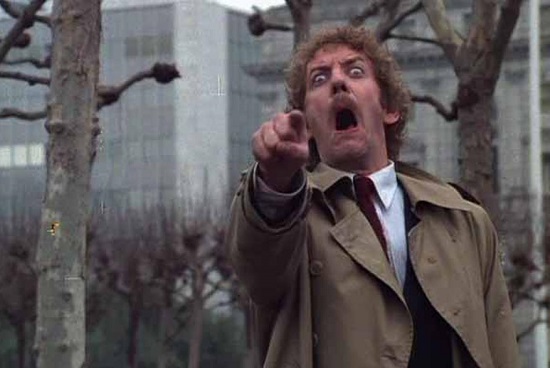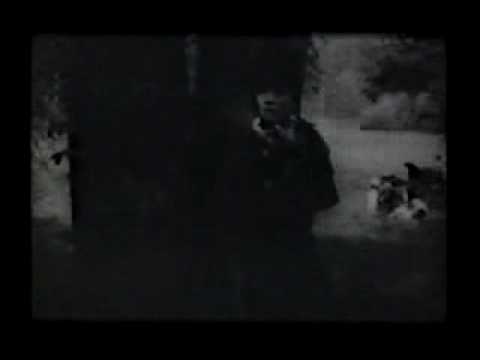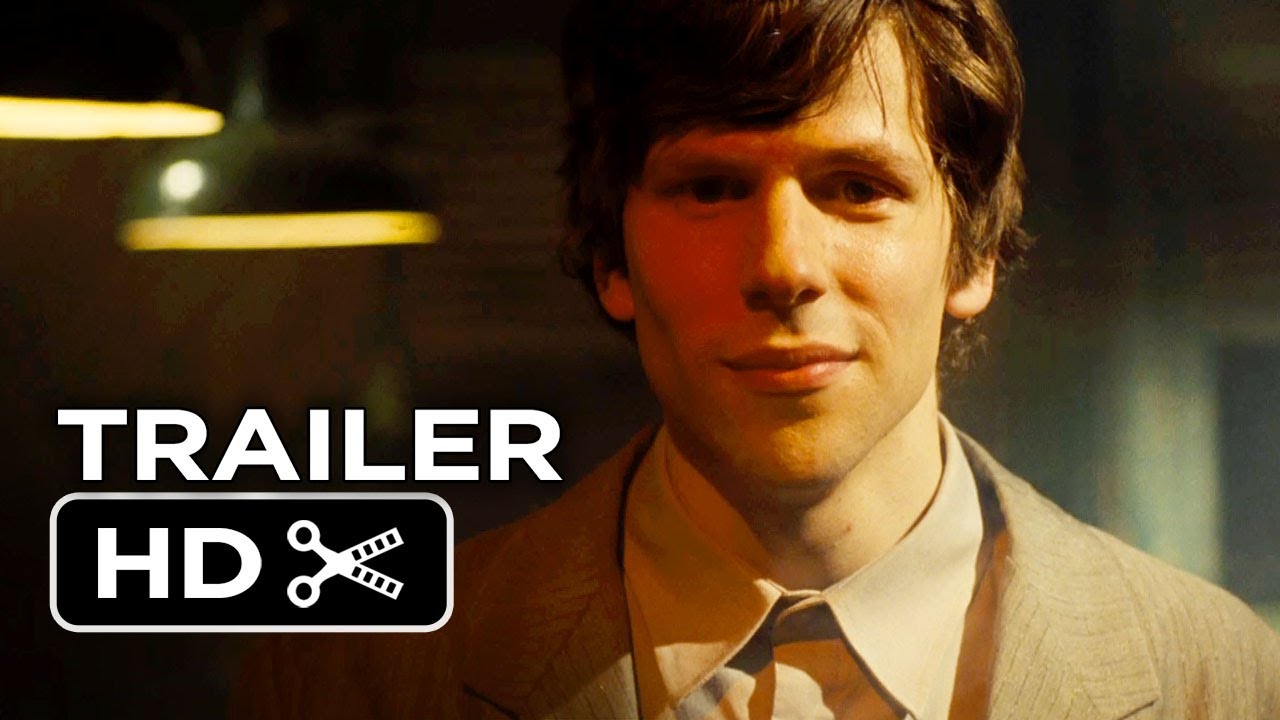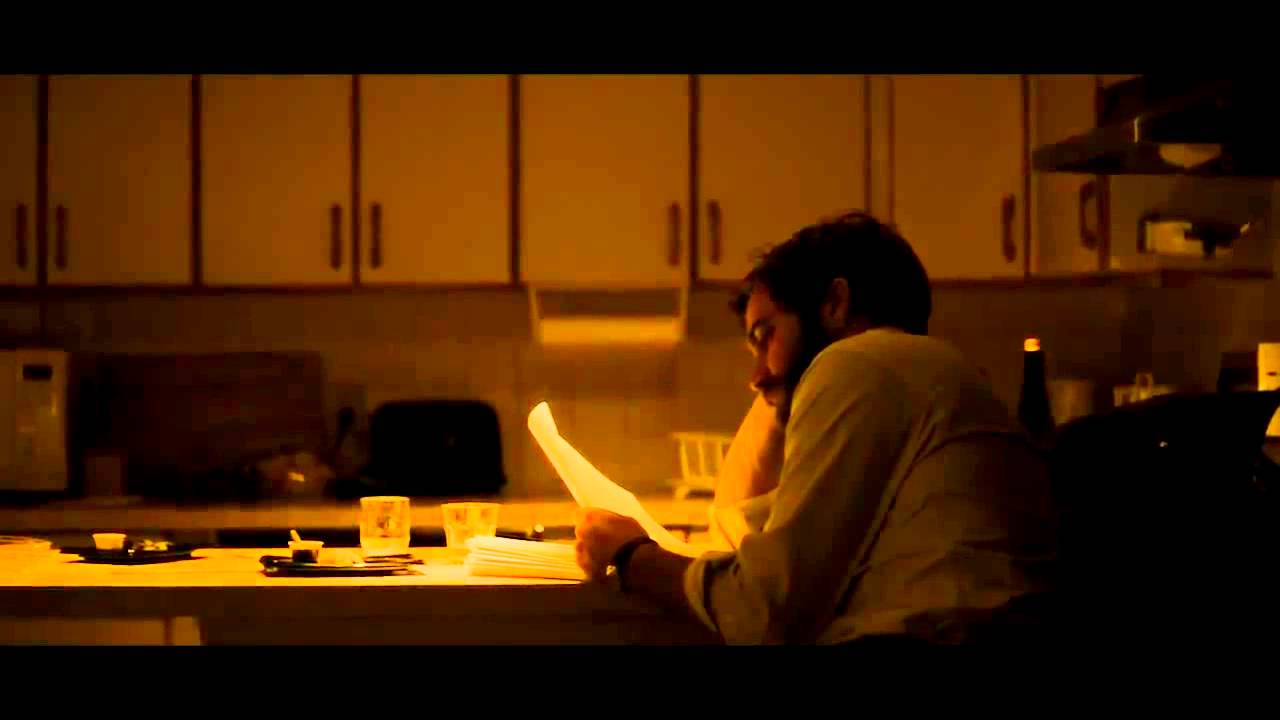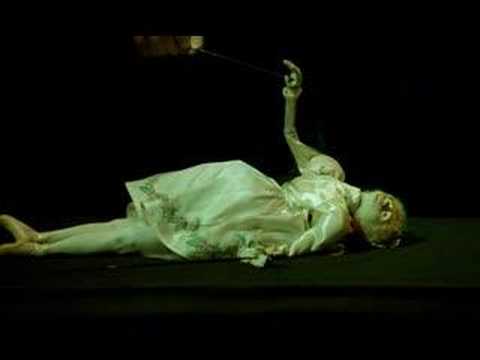For every Tom Hardy, there’s an Eddie Murphy, for every Jeremy Irons a Lindsay Lohan lays in wait. For every triumph of thespian double trouble committed to camera there’s an equal testimony to the overplayed hogging of screen space by an actor down on their luck. But from unapologetically schlocky horror, complex suspense and sci-fi, to kitschy comedy, the double, the twin and the duplicate in film has afforded actors the never out-of-vogue opportunity to flex and stretch their performative musculature on cinema screens. The concept of the double draws from a established literary and filmic history. Long since a Lynchian lynchpin, every auteur from Kaufman to Krzysztof Kieslowski has utilized the double. In a myriad of storytelling effects, we’ve seen ruminatively metaphysical film noir to near farcical metafiction, been allowed to wonder at the collective noun for a preponderance of Malkovichs, and seen films propagated with Manichean dualities, Janus faced gods, mirrors, abrupt birthings and problematic pod people. Through film history the double has constantly re-emerged, always a narrative enigma, but never indecipherable.
More than a decade after audiences fled from the Lumiere brothers’ image of an oncoming train, still unsophisticated early filmgoers screamed in terror when Balduin’s reflection stepped out of the mirror in 1913’s The Student Of Prague. The first feature length horror film ever made, Balduin’s double again stepped through the mirror 13 years later in Director Henrik Galeen’s 1926 German Expressionist version. In each iteration, Balduin commits that most Faustian of faux pas, and unwittingly sells his reflection to sorcerer Scapinelli in exchange for social status. His duplicate image, given a lease of life by the sorcerer, causes chaos in his locality, acting immorally and leaving Balduin to take the blame. Spurred into action, in both films’ penultimate moments, Balduin shoots his double only to realise he has also mortally injured himself. All the typical diction of the double in film is present here in distilled form. The double’s agenda is often adverse to the main protagonists, they may even in fact be malignly motivated in their intent. Yet, inextricably bonded together, their fates are always intertwined.
While The Student Of Prague may be the first cinematic take on the double, perhaps Fyodor Dostoevsky’s is the most well known. Dostoevsky’s timeless nightmare has come subtly to screen again and again. It’s influence reaches through film-time, from the club whose first rule doesn’t permit us to talk about it, to Brad Anderson’s The Machinist and, most recently, Richard Ayoade’s 2013 Terry Gilliam and Hitchcock indebted dystopia of the same name. Simon (Jesse Eisenberg), a lowly data analyst, occupies a beige paletted, dank, atemporal office, crunching numbers for a large corporation. His sense of self is gradually being eroded by a series of belittling personal slights and bureaucratic banalities. He holds an unrequited candle for his equally lonely work colleague Hannah (Mia Wasikowska) but Eisenberg’s reticent clerk can barely work up the courage to speak to her. Instead with a Rear Window tinged voyeurism, he opts to spy via telescope into her adjacently facing apartment building.
When Simon’s double James appears, their physical similarities go largely unnoticed except to each other. Despite sharing the same base materials, James is everything Simon is not. At first fast friends, James’ manipulative qualities quickly become apparent and his suave, aggressive and confident manner makes him a hit in the office and a lothario with ladies. He begins to take credit for Simon’s work and begins an affair with Hannah. The greater Simon’s social status falls, the more prevalent and successful James becomes. Simon who is in essence almost anonymous to those that meet him, is forgotten and ignored by a series of officials, co-workers and waitresses. Captured on screen by a series of frames, windows and reflections, he can but watch his now corporeal anomie from afar, through telescope, windows and surreptitiously placed cracks. The plot points duly click into place toward an increasingly cataclysmic conclusion. In Dostoevsky’s original tale Fyodor goes mad and is committed to a lunatic asylum but in Ayoade’s version a far more complex end conundrum occurs.
But why has cinema so frequently returned to this concept?
In her seminal essay ‘Visual Pleasure And Narrative Cinema’, Laura Mulvey posits that functions of the cinematic apparatus itself may trigger an identification process similar to what occurs in the trope of doubling. Building on the psychoanalytic theory of Jacques Lacan, Mulvey explains the importance of the mirror stage in the early construction of the childhood ego and its echo in the cinema-going mindset. The mirror stage occurs at a time when the child’s “physical ambitions outstrip their motor capacity”. Its recognition of itself in its mirror image is one that is of “a more complete and capably formed individual”. As cinemagoers we’re also made witness to a more idealised and capable counterpart on screen. Mulvey refers to this identification process as narcissistic scopophilia. The darkened movie theatre, the audience’s passive spectatorship, the technical evolution of editing, all collude to align our perspective, through POV shots and narrative conventions, to that of the main protagonist. The audience’s repressed desires are then transferred onto their counterpart on screen. This process of recognition and misrecognition is key to the cinematic experience and the double in cinema.
For Hitchcock’s classic mystery of erotic obsession, Vertigo, Mulvey explicates this idea further. James Stewart’s Scottie, charged with following suicidal Madeleine (Kim Novak), falls in love, her subsequent death sending him into a spiral of depression. Her semblance’s reappearance in the more down-home and less refined Judy (Novak again) begins a compulsion to remake her in Madeleine’s image. He buys her jewellery and obsessively reconstructs her in dress and manner until she more closely replicates his lost love. Mulvey explains this as the active male gaze, controlling and fetishistic. Scottie, a representative of patriarchal order as a policeman and investigator, legitimizes this action. Novak, the object of this gaze, isn’t allowed that narrative agency. Instead she is carefully pried apart by the camera lens, flatly filmed as a fetishistic object only connoting “to-be-looked-at-ness”. While the audience “caught in the moral ambiguity of looking” is laced together in this “voyeuristic phantasy of film.”
Unlike our previous doubles, Judy’s doubling is narratively regular or at least not fantastic, magical or unexplained. But Judy’s dilemma isn’t unusual. Nearly all doubles spring from controlling, corrupt or unsatisfactory societies, and her slow reconstitution as the more societally gratifying Madeleine has something in common with many of our indubitably damned doubles. The double isn’t just a mirror image, but also a product forcibly born from the society that creates it. The original is often the misfit, the outcast or somehow unacceptable. Simon’s social anomie and James’ success, in Ayoade’s film, points to a society where only the sociopath can achieve and Simon only wrests free from his symbiotic stranglehold when he steps through the mirror (by becoming more like him).
In 2013’s Enemy,, Jake Gyllenhaal’s depressive lecturer Adam Bell first sees his counterpart on the cinema screen, playing a bit part in a Hollywood film. When Adam reaches out to his double, Daniel St. Clair, a brash, uber-confident actor, he becomes involved in a Lynchian corrupted Hollywood, full of secret societies and alien births. Slate Author, Forrest Wickman notes that Enemy is about the horror of living in a totalitarian state without knowing it. The looming architecture and sonorously soundtracked panoramic shots, create an ensorcelled, spider-webbed world that Gyllenhaal’s Daniel can only decry in lectures to his disinterested class. “Control. It’s all about control. Every dictatorship has one obsession and that’s it. So in Ancient Rome they gave the people bread and circuses. They kept the populace busy with entertainment. But other dictatorships use other strategies to control ideas and knowledge. How do they do that? Lower education, they limit culture, censor information, they censor any means of individual expression.” In Enemy’s world, ‘control’ may be the media and propaganda led entertainment. The contriving Daniel has drunk the proverbial Kool-Aid with an unhappy Adam merely treading water until they finally meet. Adam must concede to this society’s particular pressures for the film to truly reach its conclusion.
The double is often a monster. To the fully formed self, its appearance is terrifying and enacts a process in which only one twin, double, duplicate or doppelganger can survive. This is perhaps most overtly expressed in The Invasion Of The Body Snatchers, (1956 and 1978). When an alien plant based life form descends to earth, creating hive minded but emotionless doubles of its victims, they gradual begin to duplicate the populace in an effort to take over society as a whole. Its ’50s outing drew comparisons to the terror of communist threat and McCarthyism’s communist witch-hunts. But by the 1970s, after the Watergate scandal and the Vietnam War, the allegory had graduated to a mistrust of the government. Pod-people may have been the Red Menace in the ’50s iteration, but under the ’70s architecture of more organised dissent, they more clearly became a corrupt and untrustworthy political edifice. Summed up the contorted gawping maw of Donald Sutherland at the film’s end. A sinister and disturbing inversion of the “Your Country Needs You” call to arms. A willingly duped populace are the true terror of Invasion of the Body Snatchers.
The double occurs again in Krzysztof Kieslowski’s 1991 film The Double Life Of Veronique. Two women’s lives are inextricably linked, Weronika and Veronique. One Polish, one French, they’re similar in every way but set aside by nation. Bonded by their bodily and almost mystical connection, they both feel as if they’re not alone in the world but never formally meet. While Weronika walks through a protest in Krakow Square, she catches a short glimpse of her touring counterpart as she departs on a bus. But while French Veronique prospers in the newly European Union France, in the still fractious early days of democracy in Poland, Weronika’s life energies ebb away. It isn’t the first time Kieslowski’s explored this type of variation, of course. In 1987’s Blind Chance his protagonist Witek, a young medical student, runs after a departing train and his life splits apart into three alternate timelines. One in which Witek, becomes a Communist party member, another in which he becomes a revolutionary and a third in which he doesn’t align himself politically at all. Weronika’s first stupor occurs while a governmentally attired man approaches her ominously in the park. And it isn’t difficult to extrapolate The Double Life Of Veronique as a similar if more oblique take on two differing societies. It could be that Kieslowski is proffering a more hopeful view for Poland’s future here, but more likely he is condemning its past. In part leaving behind his more overtly political early films, The Double Life Of Veronique’s sensuous image driven experiment only presents possibility for one double, and a tragic end for the other.
In poetic moral fables and b-movies, the double finds most light in repressive, authoritarian societies and imbalanced regimes. Set in opposition with their original counterpart, their very existence is inextricable with and a product of the original’s surrounding world, their duality denoting a hidden criticism of the society that has birthed them. The double’s survival or doom works to either condemn or legitimize the society they spring from. But even with victory comes discord and the original shows us a conflicted worldview when he assumes his counterpart’s attributes to survive. In the final narrative throes, we as cinemagoers watch it all play out emblazoned on the big screen. Our own struggle with self-image in society manifested, our own on screen counterpart carrying out the heavy work of splitting, destroying, reunifying or failing.

